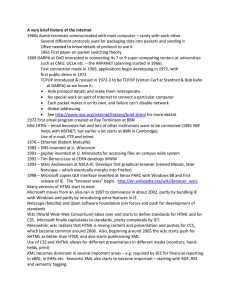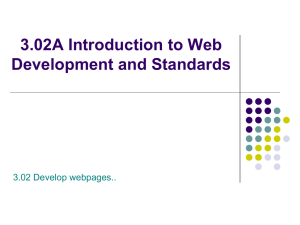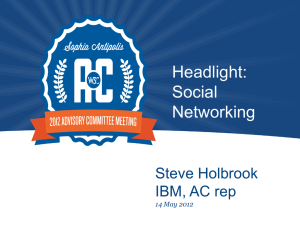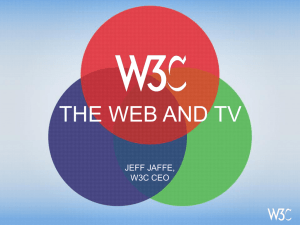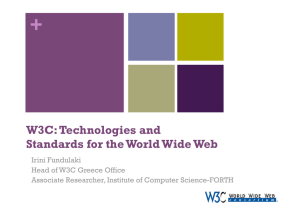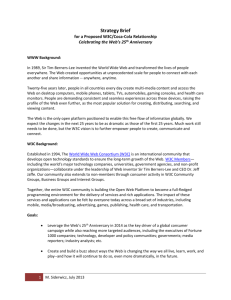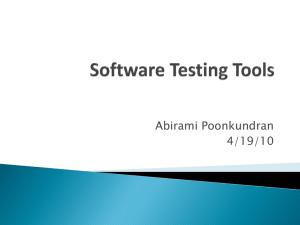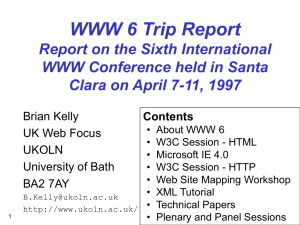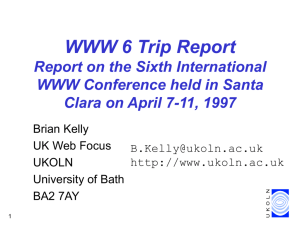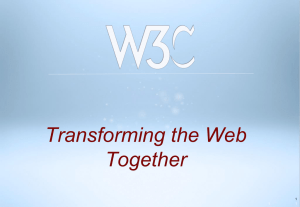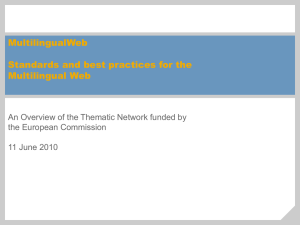source: MS Word Document
advertisement
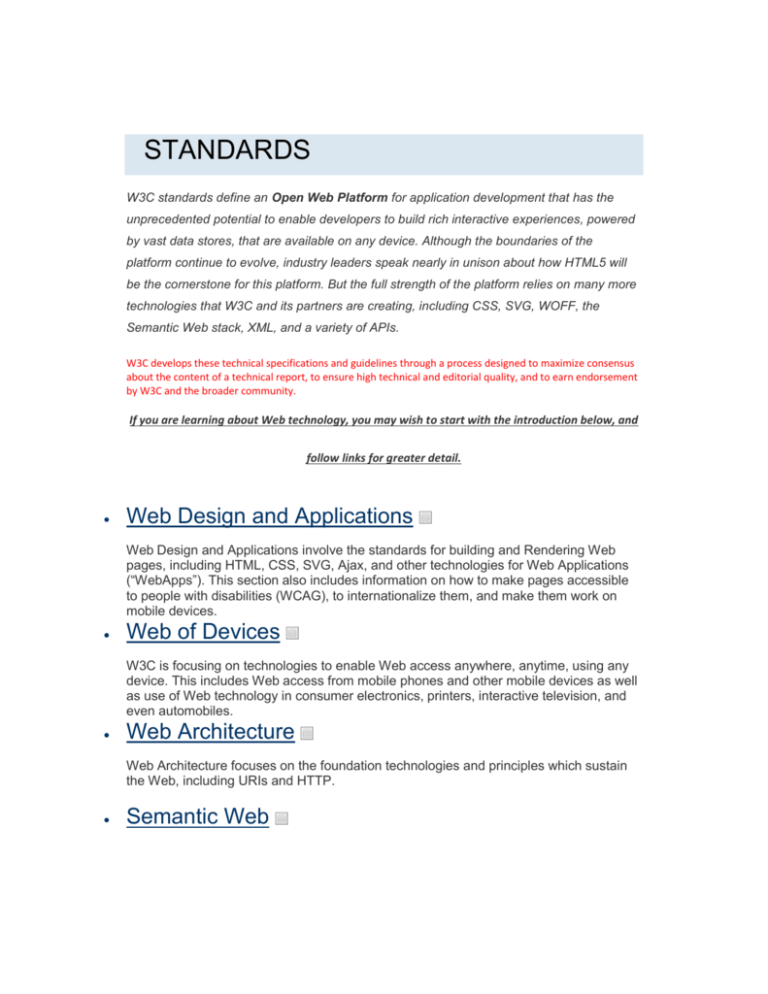
STANDARDS W3C standards define an Open Web Platform for application development that has the unprecedented potential to enable developers to build rich interactive experiences, powered by vast data stores, that are available on any device. Although the boundaries of the platform continue to evolve, industry leaders speak nearly in unison about how HTML5 will be the cornerstone for this platform. But the full strength of the platform relies on many more technologies that W3C and its partners are creating, including CSS, SVG, WOFF, the Semantic Web stack, XML, and a variety of APIs. W3C develops these technical specifications and guidelines through a process designed to maximize consensus about the content of a technical report, to ensure high technical and editorial quality, and to earn endorsement by W3C and the broader community. If you are learning about Web technology, you may wish to start with the introduction below, and follow links for greater detail. Web Design and Applications Web Design and Applications involve the standards for building and Rendering Web pages, including HTML, CSS, SVG, Ajax, and other technologies for Web Applications (“WebApps”). This section also includes information on how to make pages accessible to people with disabilities (WCAG), to internationalize them, and make them work on mobile devices. Web of Devices W3C is focusing on technologies to enable Web access anywhere, anytime, using any device. This includes Web access from mobile phones and other mobile devices as well as use of Web technology in consumer electronics, printers, interactive television, and even automobiles. Web Architecture Web Architecture focuses on the foundation technologies and principles which sustain the Web, including URIs and HTTP. Semantic Web In addition to the classic “Web of documents” W3C is helping to build a technology stack to support a “Web of data,” the sort of data you find in databases. The ultimate goal of the Web of data is to enable computers to do more useful work and to develop systems that can support trusted interactions over the network. The term “Semantic Web” refers to W3C’s vision of the Web of linked data. Semantic Web technologies enable people to create data stores on the Web, build vocabularies, and write rules for handling data. Linked data are empowered by technologies such as RDF, SPARQL, OWL, and SKOS. XML Technology XML Technologies including XML, XML Namespaces, XML Schema, XSLT, Efficient XML Interchange (EXI), and other related standards. Web of Services Web of Services refers to message-based design frequently found on the Web and in enterprise software. The Web of Services is based on technologies such as HTTP, XML, SOAP, WSDL, SPARQL, and others. Browsers and Authoring Tools The web's usefulness and growth depends on its universality. We should be able to publish regardless of the software we use, the computer we have, the language we speak, whether we are wired or wireless, regardless of our sensory or interaction modes. We should be able to access the web from any kind of hardware that can connect to the Internet – stationary or mobile, small or large. W3C facilitates this listening and blending via international web standards. These standards ensure that all the crazy brilliance continues to improve a web that is open to us all. Questions About Standards? Learn more about W3C standards and consult the W3C Standards FAQ for answers to questions such as: What does "Web Standard" mean? What is a "Recommendation"? Does W3C publish other types of documents related to standards or future work? What are Submissions? Where should I send comments about a specification? Where can I find information regarding patent disclosures/claim exclusions?
